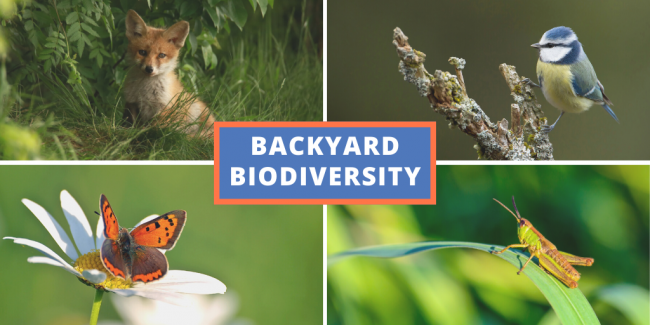If you haven’t noticed, I have a penchant for loving the weird little critters, and that includes fungi! Fungi are organisms that have a wide range of shapes and sizes, from the one-cell noble yeast all the way up to the Humongous Fungus – clocking in at over four square miles. Today, we’ll be diving into the fungi that you can find in your backyard. We’ll also take a brief look at some fungi imposters called slime molds.
Special note for this blog: Please do not eat wild fungi unless you are 200% sure that they are edible. I am a scientist, I have a PhD, and I still do not put wild fungi in my mouth. Fungi produce many toxic compounds that can make you very sick or even kill you.
The Small & Mighty Yeast
The first mold we’re going to talk about is one that you can’t really see: yeast. Yes, yeast, the fungi that makes our bread and our beer, and sends us to the doctor when things get out of whack. Yeasts are everywhere, and this is reflected in our history of alcohol and bread development. Different styles of bread and alcohol are found all over the world, and if you reach back far enough, you’ll find that before humans even knew about microorganisms, we were able to capture yeasts and use them to our advantage.

Yeast are a pretty typical fungus, in that they can reproduce either asexually through a process called “budding” or sexually by combining DNA with another yeast cell and then splitting.
With the resurgence of homesteading, and grocery shortages in this time of pandemic, there have been myriad articles describing how to make your own yeast; folks have been perfecting the art of sourdough; and interest in homebrewing has never been higher. What’s not to love about yeast?
What Do Crab Apple And Juniper Trees Have In Common?
I moved to western North Carolina in late winter; by early spring, I was noticing something very unusual on my neighbor’s cedar trees. Softwood trees like cedar? They’re not supposed to have flowers! But here I was, looking at these things that looked very much like flowers. I turned to the search engines and found my answer immediately: it was a fungus called the cedar apple rust!
This fungus has a wild lifecycle. It spends half of its time on each type of plant: apple trees or cedar trees. On apple trees, like the crab apple trees that I have all over my yard, it appears as a rust fungus: a discoloration on the leaves. When it produces spores, they travel by wind over to my neighbor’s cedar trees. Then, inside the cedar trees, they end up creating these elaborate fruiting structures (pictured), which then release spores that travel back to the apple trees.

This fungus is a pretty bad pest on apple trees, and the recommended treatment is to interrupt the disease cycle by removing all of the cedar trees within a one mile radius of an apple orchard. But that’s not very practical. So, most farmers rely on a combination of fungi-resistant apple species and targeted fungicide application. Here in the rural mountains north of Asheville, my neighborhood doesn’t have apple orchards to protect, so we just let the fungus go wild and live its happy, weird little life.
Woodsy Fungi: Turkey Tails & Morels
I would never write an article about fungi without talking about the most popular and common fungi out there. These two species are well-known and well-loved by hikers, children, and everyone in between.
Turkey tail fungi look like… turkey tails! They occur most frequently on decaying trunks of trees, and have a staggered cup-shape appearance. They’re fun to touch, but please don’t eat them! They’re not edible, but they are being used in drug trials for cancer patients.

The other popular woodsy fungi is the treasured morel. Morels are in high demand all across the United States for cooking. They have a spider-web appearance to their fruiting bodies, and there’s a ton of folklore about how to find morels. They may or may not occur near certain tree species, they occur overnight, they need a certain soil temperature; the list goes on and on. Have you seen morels before?

Slime Molds: Not Really Fungi, But Still Cool!
Slime molds are these creatures that look like fungi and were even classified as fungi until recently, but they actually fit into the broader “Protista” kingdom, which houses other creatures like amoebas and algae. They spend most of their lives as single-celled wandering organisms, but when food gets scarce, they congregate and form elaborate fruiting bodies where they make spores.
The most common slime mold you’ll see is the “dog vomit” slime mold. Ew, right? But they’re so cool! They create these medium-sized bright yellow and orange structures on the soil. I see them in the spring on my neighbor’s mulch.

And… Action!
Did you enjoy learning about these awesome little fungi? If so, why not show us? Show us your favorite fungi and tag us on Instagram, Facebook, or Twitter!
Become a Forest Defender today! Your monthly gift will protect the fungi and biodiversity of the South.
Join our email list to get new Biodiversity in Your Backyard sent directly to your inbox!

 Like learning about biodiversity? Sign up to have more like it delivered directly to your inbox!
Like learning about biodiversity? Sign up to have more like it delivered directly to your inbox!
What an interesting article..I’m planning a small orchard of a very old Apple variety, Newtown pippin, but I will have to spray it for this rust😧. Also, I used to pick 5gallon buckets full of morels in WV on the farm. They are so good.